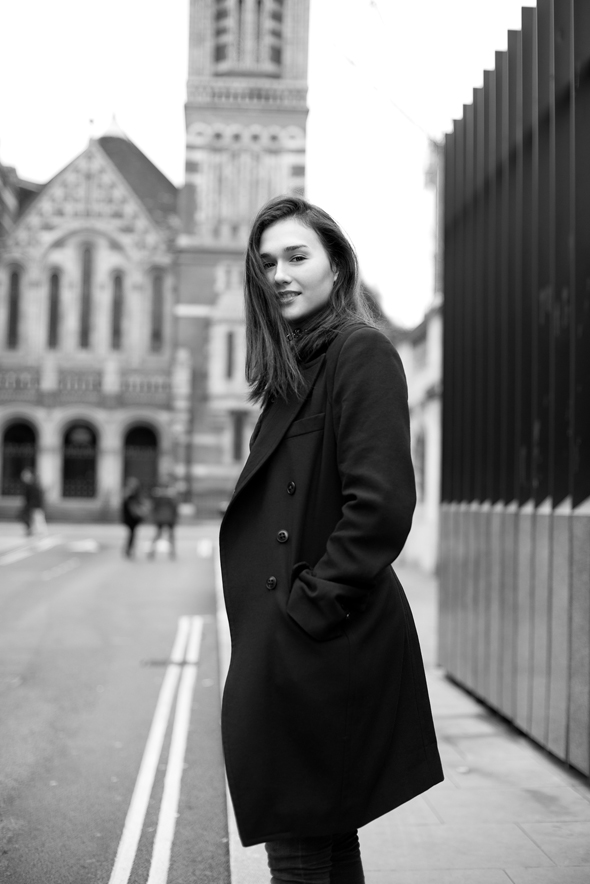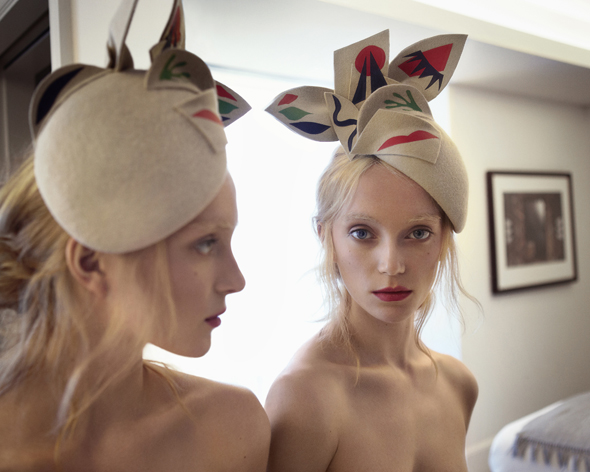
From an early age, Laura Apsit Livens felt drawn to big and bold colors and patterns, a fascination she now brings to her hat collections. Based in Mayfair, London, Livens is determined to keep couture millinery alive and popular. Her passion earned her a coveted spot in the Headonism exhibition at London Fashion Week this fall. Couture millinery, she says, showcases intricate sewing techniques and taking the time and skill “to make something spectacular mixed with unique design—ensuring that there would be nothing in the world that would be the same.”
The inclusion in Headonism marks critical recognition from her peers of Livens’ journey into fashion. “When I look back at my earlier years I can see that I used to chase ambition too much. Now I am in a much better place, and things have started to fall into place,” she continued.

Livens attributes Marc Jacobs as the initial inspiration to become a fashion designer. At age 13, he inspired her to start designing and to work with fabric. His use of fabric in unusual ways, paired with bold fashion statements through colors and patterns inspired Livens. At the time, she says, “I didn’t know anything, except that I loved working with hats and mixed media.” Her work as an aspiring fashion designer in high school originally led her to women’s wear. While doing so, she says, “I had a light-bulb-moment and realized that I wanted to sculpt things with my hands,” Livens said. From there she went on to learn and study millinery at London College of Fashion.
Her latest Autumn/Winter 2016 collection, titled “Puerta,” is inspired by the bold color statements of Mexican doors. The word is Spanish for “door,” but Livens says the name represents more than just a direct translation. “When I have been working and thinking about a collection for so long, I normally have a word or a name that is constantly buzzing around my head—any other name wouldn’t seem right.”

The “Puerta” collection immediately reveals that Livens is not afraid of bold color, and making a statement on someone’s head. When she was 12, she visited the Tate Modem, a modern art gallery in London, and was instantly struck at a young age. She was most moved by Yves Klien’s work there. As a French artist, he is best known for his trademark blue pigment, which he coined “International Klein Blue” in 1961. “His use of blue struck a chord in me, and I was able to feel a connection somehow in the way he wanted to move the viewer,” Livens said. Color is often a portal for someone’s expression of personality. When defining the inspiration behind this collection, she adds, “It is a play on bold color and form—the color palette comes from paintings and images of doorways in Mexico and Matisse collages. I wanted to try and harness the vibrancy and culture within the pieces, and even though the hats are still objects, I want them to have movement as if they are dancing.”
Her “Puerta” hats also express inner quirkiness and people’s quest for fun. Livens’ design journey with each client is specific and individual for that very reason—no hat-wearer is the same. Livens usually does three fittings with a client. She wants the client to try on many pieces and work together to choose a style and color palette. The second fitting is when the trims are chosen, and the third and final one is when the client learns how to put the finished product on correctly and securely. Her hat making process can take anywhere from a few days to several weeks, depending on the shape of the hat. Each hat is hand blocked and hand sewn, as well, which all encompasses her ultimate goal to display the finest and highest quality of couture millinery. Livens says that her favorite part about hat design is the idea that she gets to work with her hands. “I love seeing the whole process come together. There is nothing better than standing back after finishing the collection and seeing the full range,” she continued. When looking back on where she started as a hopeful designer to where she is now, she adds, “It took me quite a while to remember that there are no rules, and I could make and design any way that I wanted.”
Text by Eden Marcus

